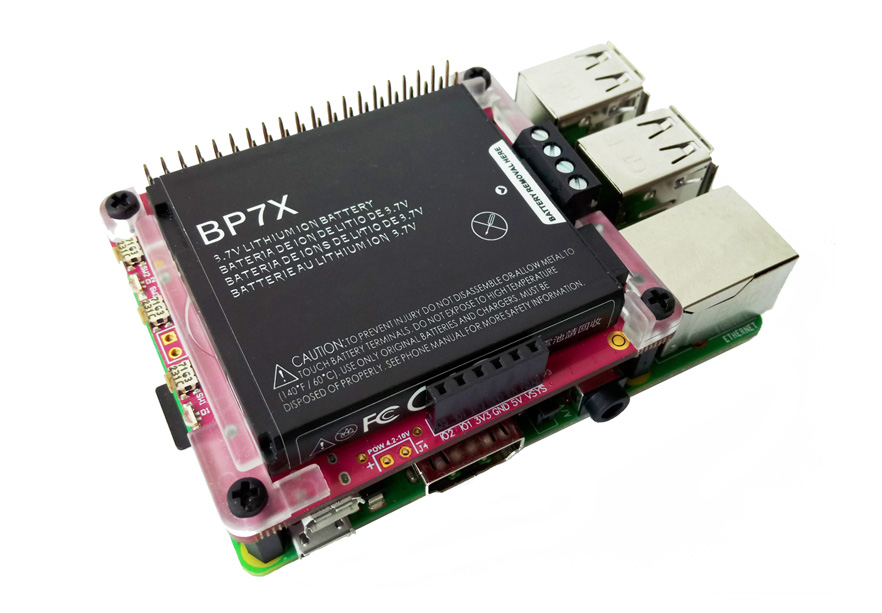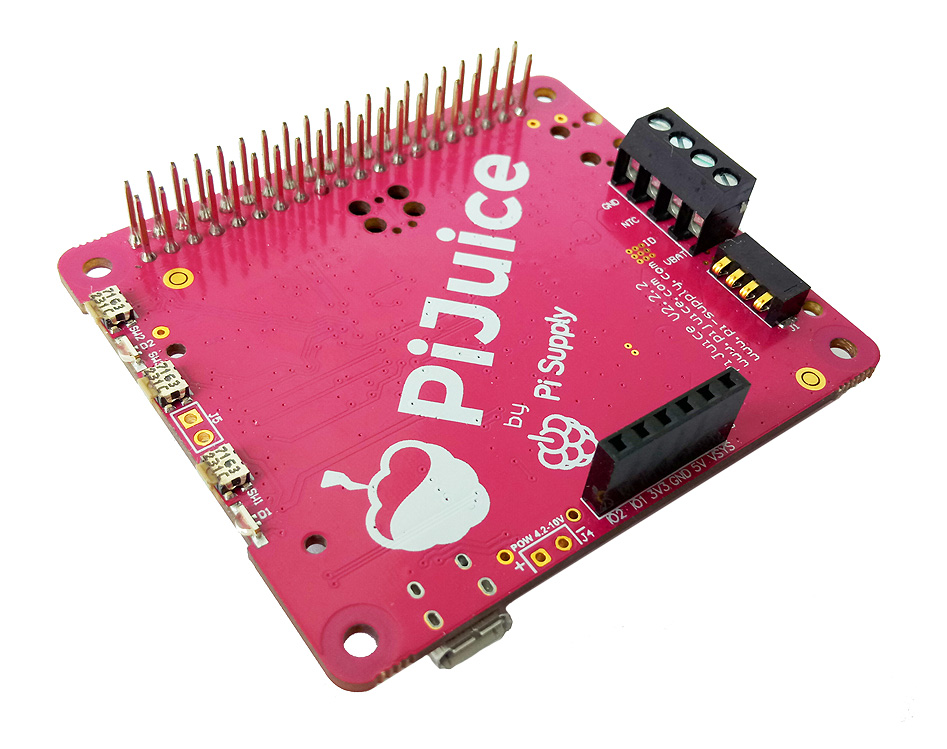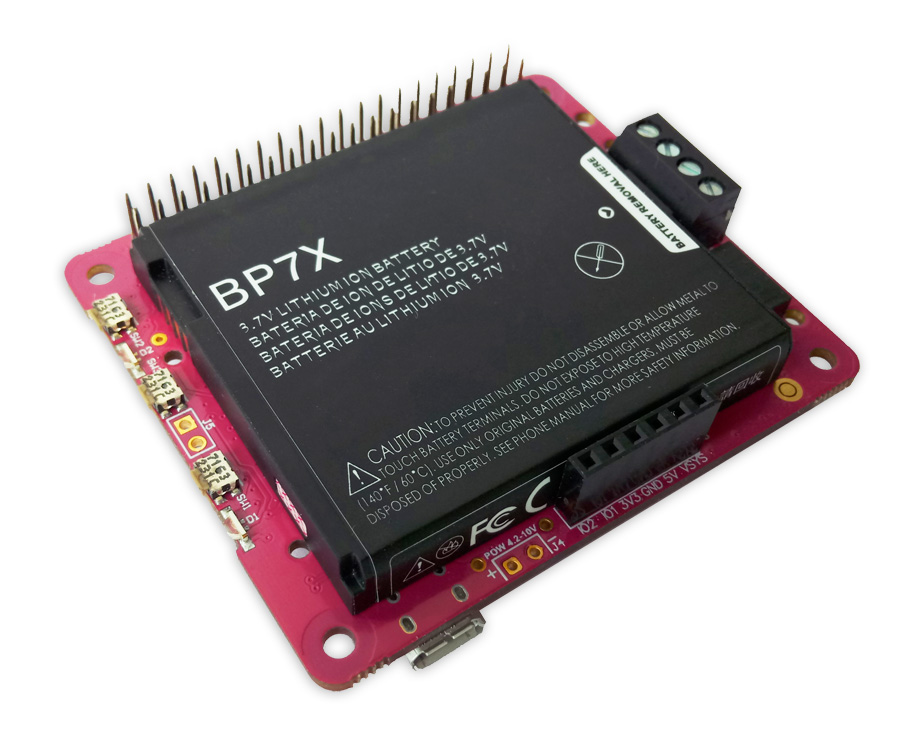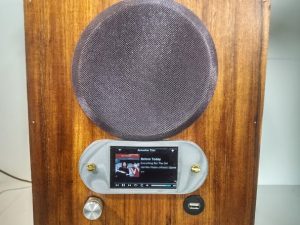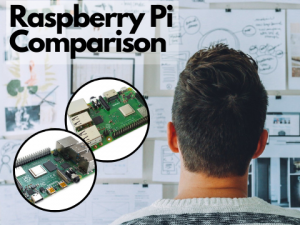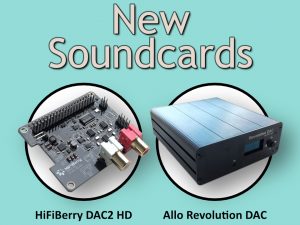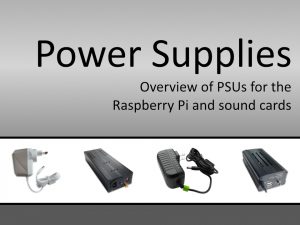Today we get to launch a new, exciting product that will elevate our mobile solutions and features to a new level. Our friends at PiSupply have successfully kickstarted a new Pi expansion board that can be combined with other GPIO hardware.
The PiJuice extension header adds a fully functional, uninterruptable power supply battery to your Raspberry Pi! This is especially helpful in connection with our standalone features like the Access Point Setup Plugin making it much simpler and more elegant to create mobile, independent projects with your Raspberry Pi.
Get the new PiJuice for your mobile project!
PiJuice works out of the box as the primary power supply, right after connecting it to the Pi. However, there are also advanced options for tinkerers and more experienced users with a custom interface. More infos on these options can be found in PiSupply’s documentation.
You can install the extended software by PiSupply in the Max2Play web interface under Raspberry Settings in our current beta. This feature will also soon be available in our next version of Max2Play.
Under the new section Plugin and Package Installer, you can select either the headless version of the software or the full graphic interface version where a new option called PiJuice Settings is added to your desktop. However, you can also just use the PiJuice as is without any software.
Further Information:
UPS and remote functionality
One of the main functionalities provided by PiJuice is to ensure that the Raspberry Pi always remains on when it needs to and shuts down safely when low on power. It provides a hardware watchdog timer to keep your Raspberry Pi up and running for mission-critical remote applications and works as a full uninterrupted / uninterruptable power supply solution.
The board comes with an onboard 1820 mAh „off the shelf“ Lipo / LiIon battery which guarantees ~4/6 hours of up time. PiJuice is compatible with any single cell LiPo or LiIon battery so bigger (or even smaller) batteries can be chosen especially depending on CPU load and connected hardware which may cause significant variations to the overall maximum up time of the Raspberry Pi. That’s why we have provided means to support bigger battery sizes like 5000 or 10,000 mAH+ to help your PiJuice last up to 24 hrs +.
The batteries can be replaced without downtime as long as an alternative power source is provided in the meantime. You could for example even use a battery bank whilst replacing either the onboard battery or one connected to the screw terminal (you shouldn’t connect a battery on board and to screw terminal at same time though or you will fry your PiJuice). Using a standard PSU will of course work too and that configuration is in fact ideal for a UPS setup.
PiJuice Features:
- Onboard 1820 mAh off the shelf Lipo / LiIon battery for ~4 to 6 hours in constant use! (with support for larger Lipo Battery of 5000 or 10,000 mAH+ to last up to 24 hrs +)
- A Full Uninterrupted / Uninterruptable Power Supply solution.
- Designed for the Raspberry Pi A+, B+, 2B, 3B and 3B+ but also compatible with Raspberry Pi Zero v1.3 and Raspberry Pi Zero Wireless.
- Integrated Real Time Clock
- Onboard intelligent on/off switch
- Low power deep-sleep state with wake on interrupt/calendar event
- Programmable multi-colored RGB led (x2) and buttons (x3) with super simple user-configurable options
- Hardware watchdog timer to keep your Raspberry Pi on and working in mission-critical remote applications
- Our revolutionary PiAnywhere technology ? the best way to take your Pi off the grid!
- Full power management API available to Raspberry Pi OS with auto shutdown capability when running low on batteries
- Raspberry Pi HAT compatible layout, with onboard EEPROM for easy plug and play operation
- Low profile design to fit inside lots of existing Raspberry Pi cases!
- Enhanced graphical user interface (GUI) available for easy install (via APT)
- Customisable scripts for enhanced flexibility and full report of battery status
- All GPIOs available via stackable header for ease of expandability and connectivity
- Charge via on-board micro USB or via the Raspberry Pi micro USB (or from onboard pin headers)
- Batteries can be charged from different type of sources and voltages
- Replace the battery without downtime. Compatible with any single cell LiPo or LiIon battery
- Fully CE and FCC tested design. Battery safety tested also.
Technical Information
- The EEPROM can be disabled and its I2C address changed for increased compatibility with other boards
- BP7X battery – original battery from Motorola Droid 2 (A955) – 1820mAh battery
- Microcontroller is an ST Micro STM32F030CCT6 ARM Cortex-M0, 48MHz, F64KB, R8KB, I2C, SPI, USART, 2.4-3.6V
- Charge IC – BQ24160RGET Charger IC Lithium-Ion/Polymer, 2.5A, 4.2-10V
- Fuel gauge IC – LC709203FQH-01TWG Battery Fuel Gauge, 1-Cell Li-ion, 2.8%
- EEPROM – CAT24C32WI-GT3 EEPROM, I2C, 32KBIT, 400KHZ, 1V7-5V5
- Optional spring pin – Mil-Max 0929-7-15-20-77-14-11-0
- Compatible with any 4 pin battery on board that can be used with 00-9155-004-742-006 battery contacts from AVX including the BP7X, BP6X, and any compatible batteries including the 1600mAh and 2300mAh ones from CameronSino (CS-MOA853SL and CS-MOA855XL)
- There is an on board 4 pin screw terminal block for larger off board batteries. Any single cell LiPo / LiIon is compatible. However, you use your own sourced battery at your own risk. We HIGHLY RECOMMEND using a battery with an internal protection circuit and a NTC (temp sensor)
- Optional header for offboard button – connected to same output as SW1
- 6 pin breakout header – with two GPIO from the ARM Cortex-M0, Vsys, 5v0, 3v3, GND connections
- Header for optional off board solar panel / wind turbine etc.
- Optional RF Shield attachment – Harwin S02-20150300 (can also double as an inexpensive heatsink)
- Input voltage range – 4.2V 10V
- Output voltage – 3.3V and 5V
- Output amperage – maximum current at 5V gpio is 2.5A and at VSYS output 2.1A, but also this depends heavily on battery capacity. For BP7X have measured around 1.1A at 5V GPIO and around 1.6A at VSYS output. Obviously, this also depends heavily on the current draw demanded by the Raspberry Pi/device itself. To achieve a maximum of 2.5A it will need battery over 3500mAh.
- Boxed weight – 96g
- Boxed dimensions – 12.2 x 10.8 x 3.5 cm
- Unboxed weight – 57g
- Unboxed dimensions – 6.5 x 5.6 x 2 cm

